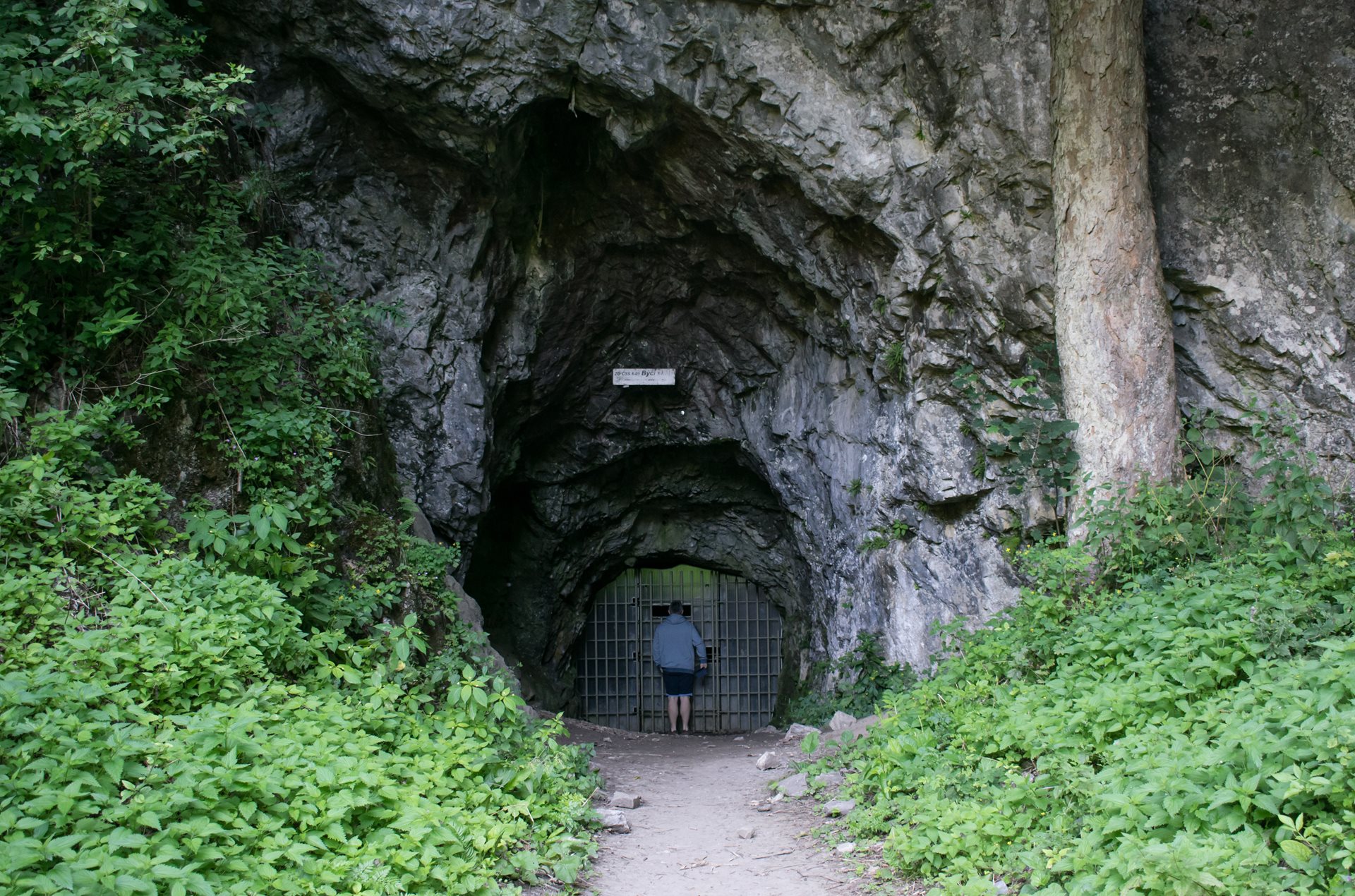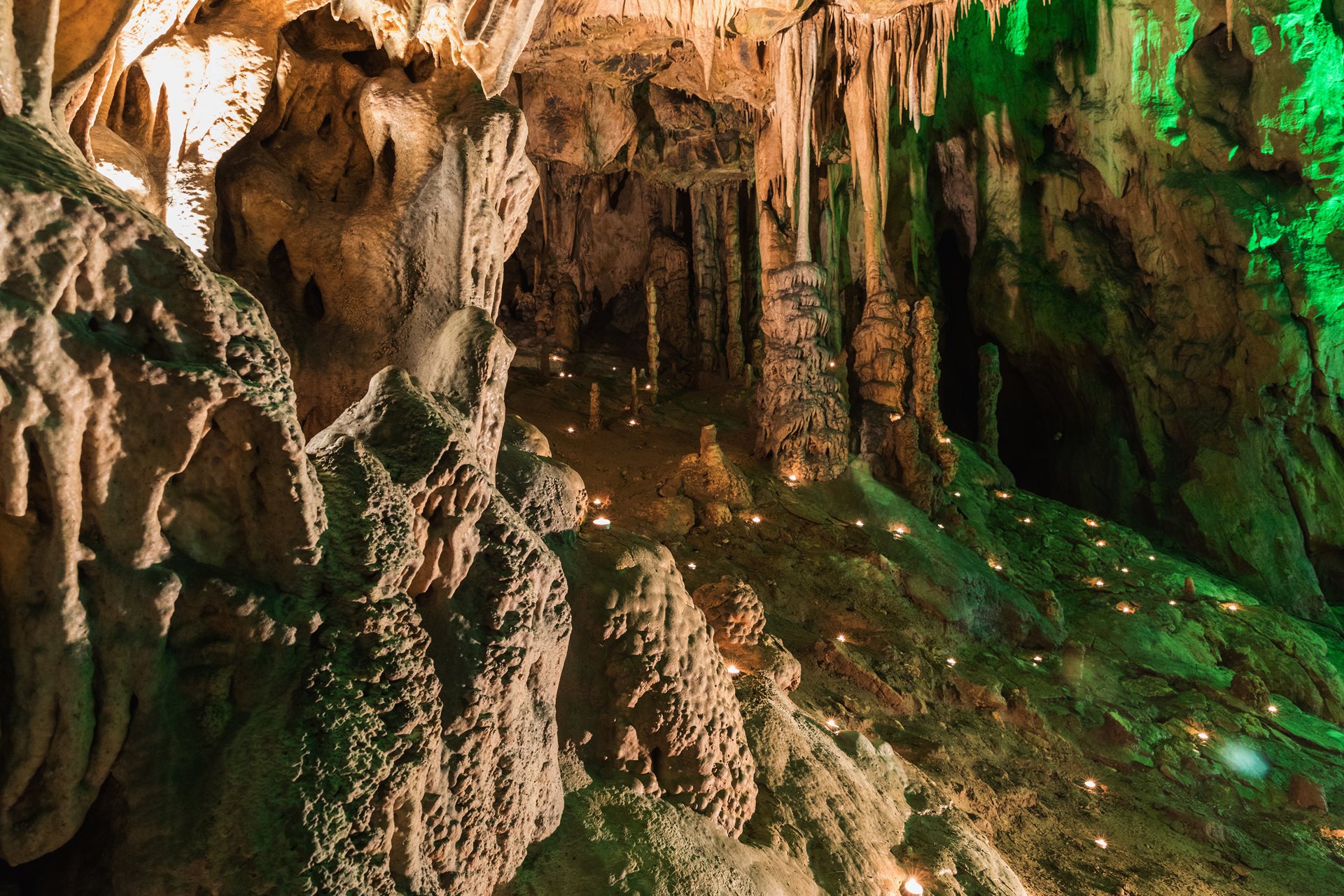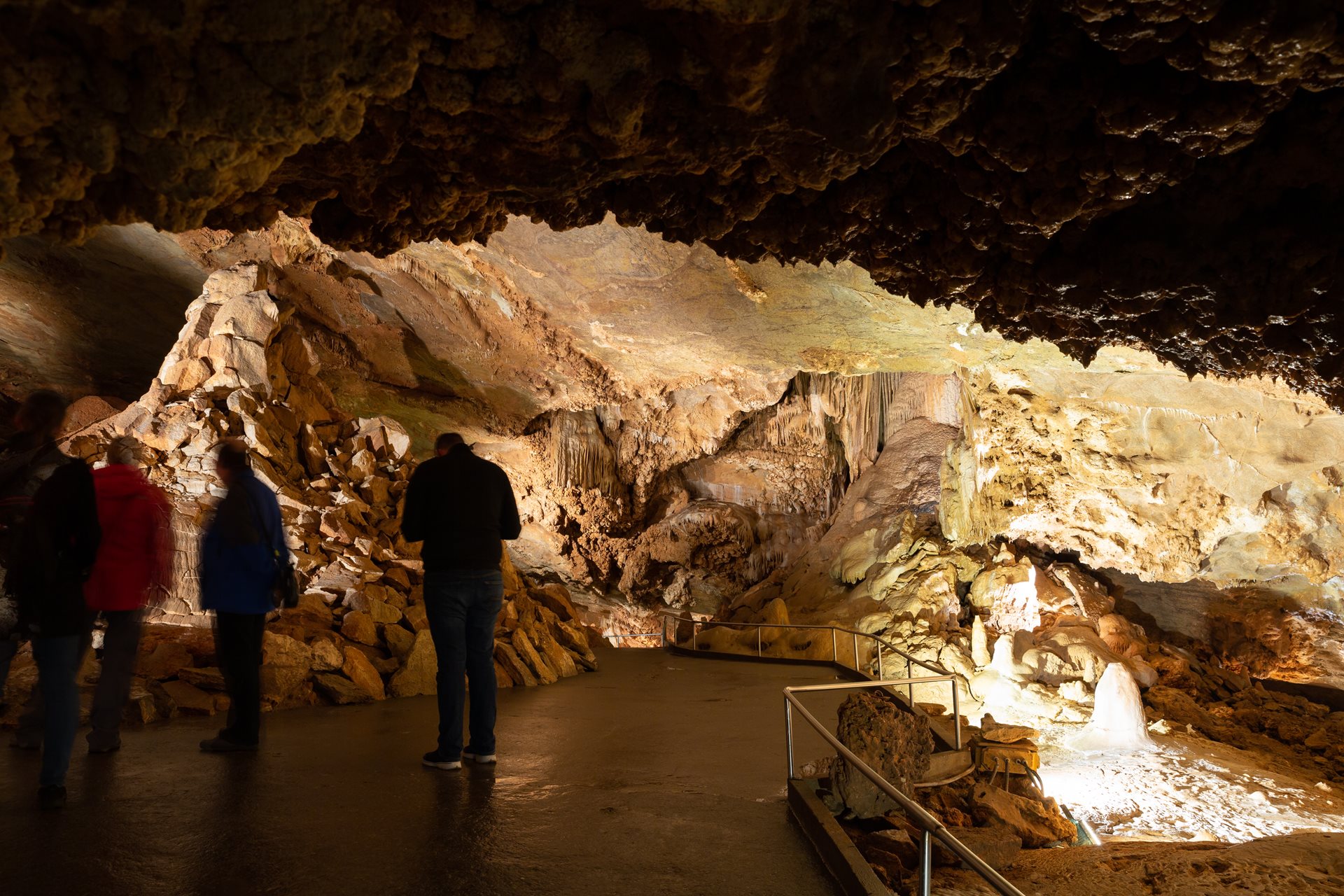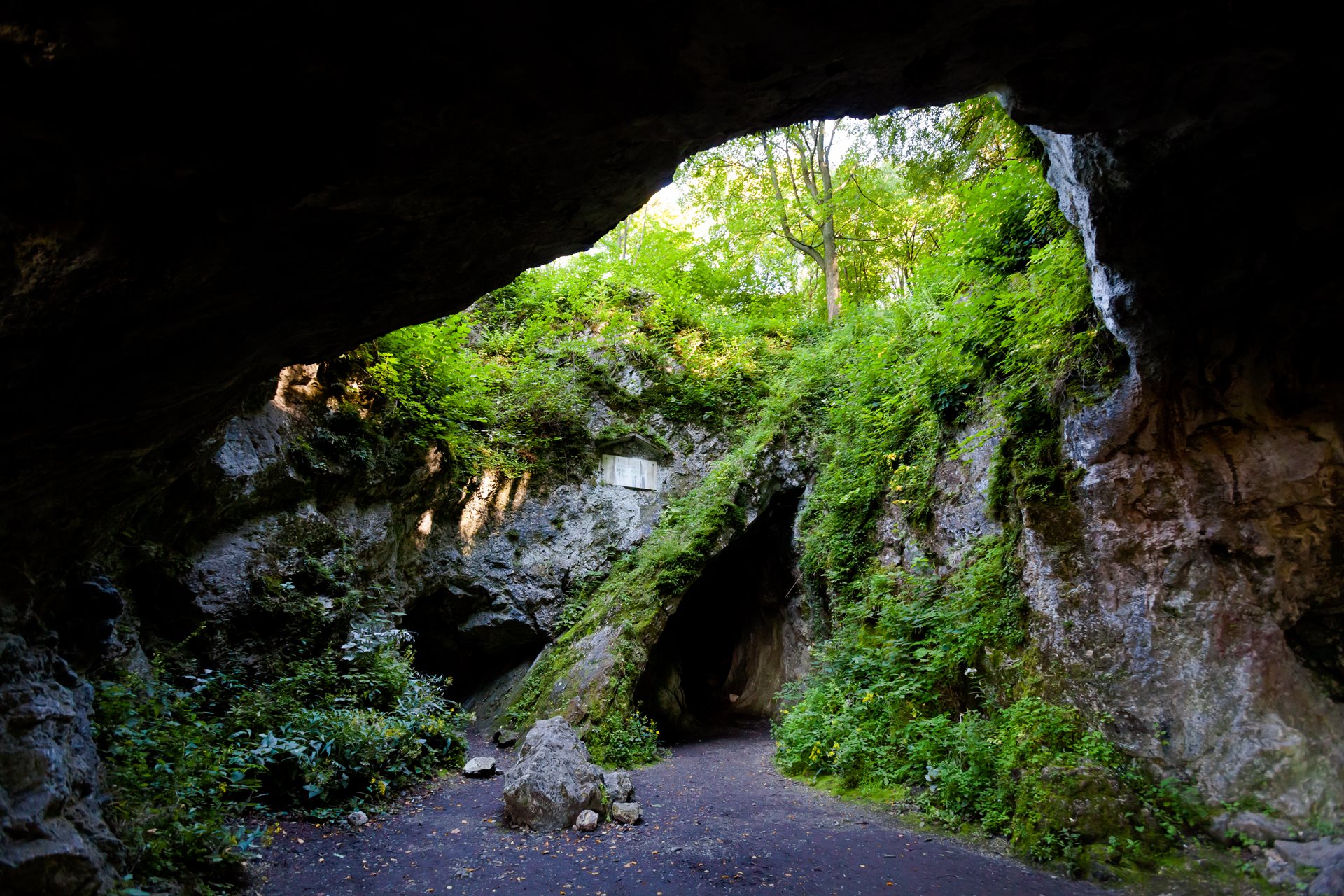Mysterious abysses, dripstones and a roughly 6,000-year-old drawing – that’s just a small selection of what waits for you underground in Czechia. Set off to discover a secret hidden from human sight and go down into Czech abysses, caves, karst formations and gorges. In 2023, we will commemorate the 300th anniversary of the descent of the first man into the Macochy abyss in the Moravian Karst, and the Zbrašovské aragonite caves, underground spaces in Teplice nad Bečvou, are celebrating 110 years since their discovery.
Prehistoric art gallery
People living many thousands of years ago also had the urge to create and express themselves by way of art. You can also find a prehistory art gallery in Czechia, namely in Catherine Cave in the Moravian Karst near Brno. The oldest drawing in Czechia is about six or seven thousand years old. It consists of black lines on a massive stone, which is nicknamed Mozek (The Brain) because of its wrinkled surface. It may have been used as a cult stone in the Stone Age, and the then inhabitants of the Catherine Cave in the Moravian Karst decorated it artistically with colours made from ashes. When you are in the Catherine Cave, look around it. With 97 metres in length, up to 44 metres in width and a height reaching 20 metres, the Main Dome of this cave is the largest underground space open to the public in the entire Czech Republic.
Cave as a ritual site
The Moravian Karst is full of surprises. The cave called Býčí skála (The Bull Rock) produced one of such surprises in the 2nd half of the 19th century. It had been shrouded in mystery from time immemorial but as late as about 150 years ago scientists discovered exactly what it involved. Archaeologists discovered a so-called Hallstatt burial site including human sacrifices there. A notable nobleman was buried there together with his servants, 40 women and horses in the 5th century BC. And why is the cave called Býčí? Because a bronze sculpture of a bull was found there, and today it’s iconic for the Hallstatt culture.
Top-secret cave
One more unique cave is situated in the Moravian Karst near Brno, it is called Výpustek. It’s a very interesting underground space that has had rich and very unusual history. People used to visit it as early as the Middle Ages, but it only became well-known after the Second World War as it housed a secret underground Nazi factory producing aircraft engine components. Now, the cave also includes a built-in military headquarters facility, which is still functional but no longer serves its purpose. So, when making a tour of the cave you’ve got the opportunity to take a look at history, although not as distant as that in the Catherine Cave.
World’s deepest flooded freshwater cave
We will stay in Moravia on our journey of underground records. Located directly near Hranice, a town close to Olomouc, are the beautiful Zbrašov Aragonite Caves, which you can visit in the summer season. What’s more, the Hranice Abyss is just a stone’s throw from there. It’s both the deepest abyss in the Czech Republic and all around the world if we count its flooded bottom as well. It seems as if it didn’t have any bottom at all. All attempts at measuring the bottom have failed to this day. The last verified data is 404 metres but experts estimate that it may reach an impressive 800 metres.
Unique dripstone ornaments
When making expeditions into the Czech underground, you shouldn’t miss the Koněprusy Caves to the southwest of Prague. It’s one of the largest cave systems in the Czech Republic. It formed in Devonian limestones that are up to 400 million years old. Since 1959 the caves have been open to the public, and you can admire their dripstone ornaments on two accessible levels. The caves are unique for their natural limestone ornamentation, resembling Brussel sprouts. This unique feature composed of calcite and chalcedony is older than 1.5 million years. Some of the sprouts contain grains or small layers of clear or milky opal. Opal is also found in other caves, but sprouts containing opal are unique on a global scale. They are residues from bygone times, when a tropical up to subtropical climate on the surface subsided.
On a boat underground
Go for a trip into the Punkva Caves! You’ll again find them in the Moravian Karst north of Brno. You’ll be walking through imposing domes and corridors featuring dripstone ornaments, and you’ll reach the very bottom of the Macocha Abyss. By the way, the abyss is very photogenic! However, the Punkva Caves have gained their popularity owing to the fact that one can take a romantic boating trip on the underground Punkva River. It’s an unforgettable experience that will be appreciated by both children and adults.
In the footsteps of prehistoric fauna
A cave that isn’t noticeable but all the more valuable is situated in the north of Moravia near the town of Štramberk. It is called Šipka (The Arrow) and a significant discovery was made inside it in the late 19th century. The jaw of a Neanderthal child and various items from the Bronze Age were found there. In fact, the cave was occupied by prehistoric animal hunters, and bones and teeth of animals such as the cave bear, European cave lion, hyena, woolly rhinoceros, mammoth, bison, aurochs, musk ox, leopard, wolverine, reindeer and elk have been found in the sediments of the cave. In short, of such animals that you won’t come across in Czech forests these days.








-(1).jpg?width=1920&height=1204&ext=.jpg)

